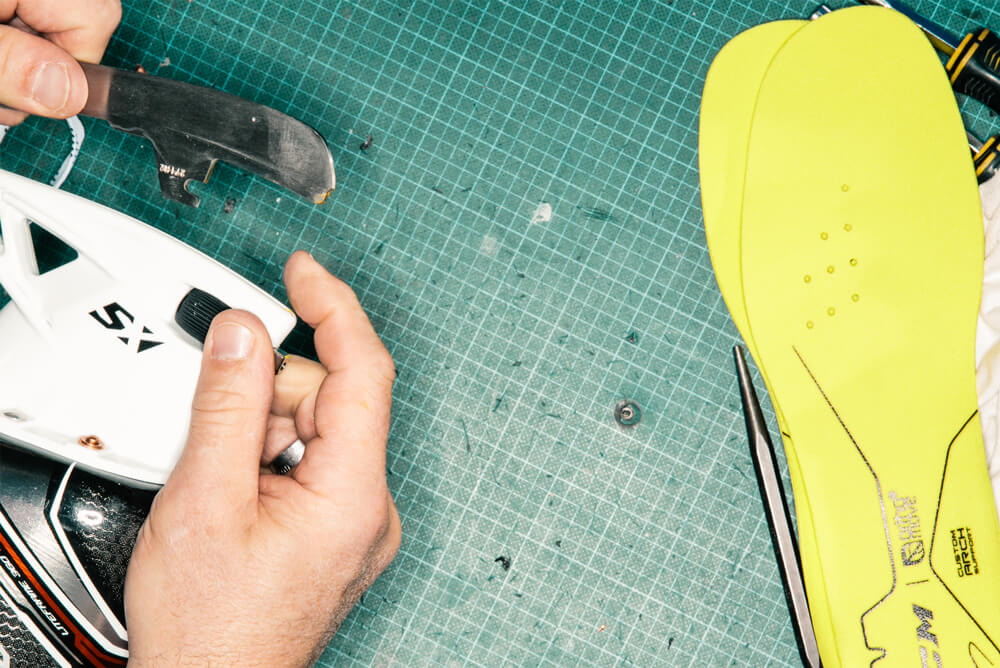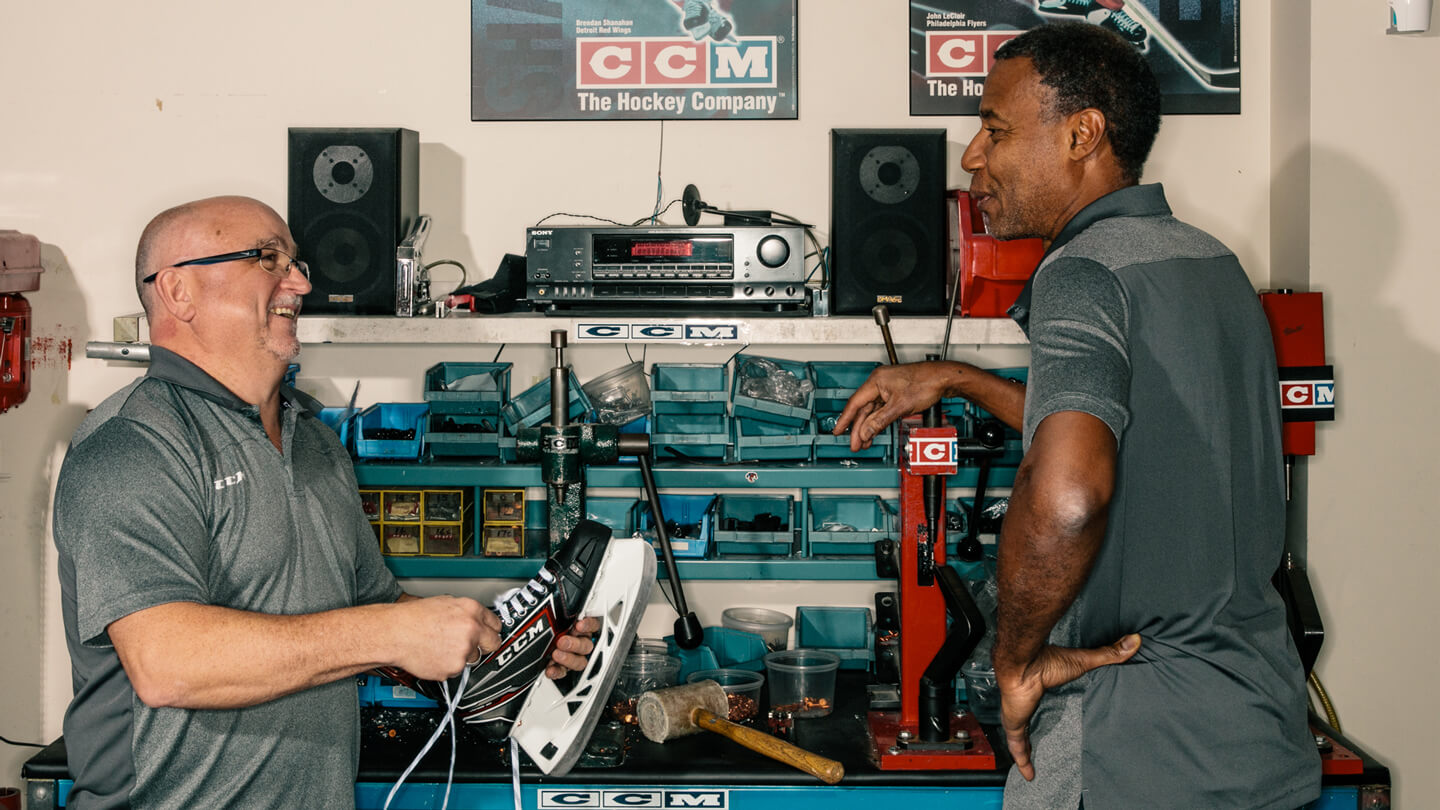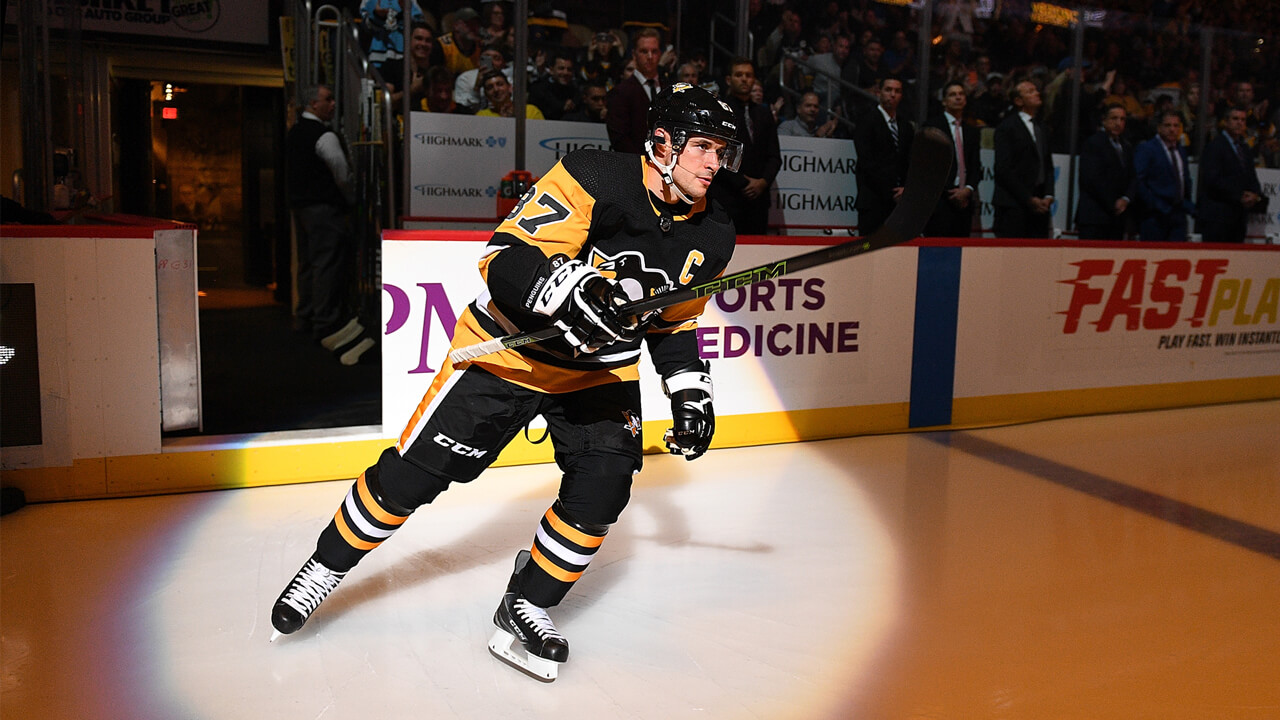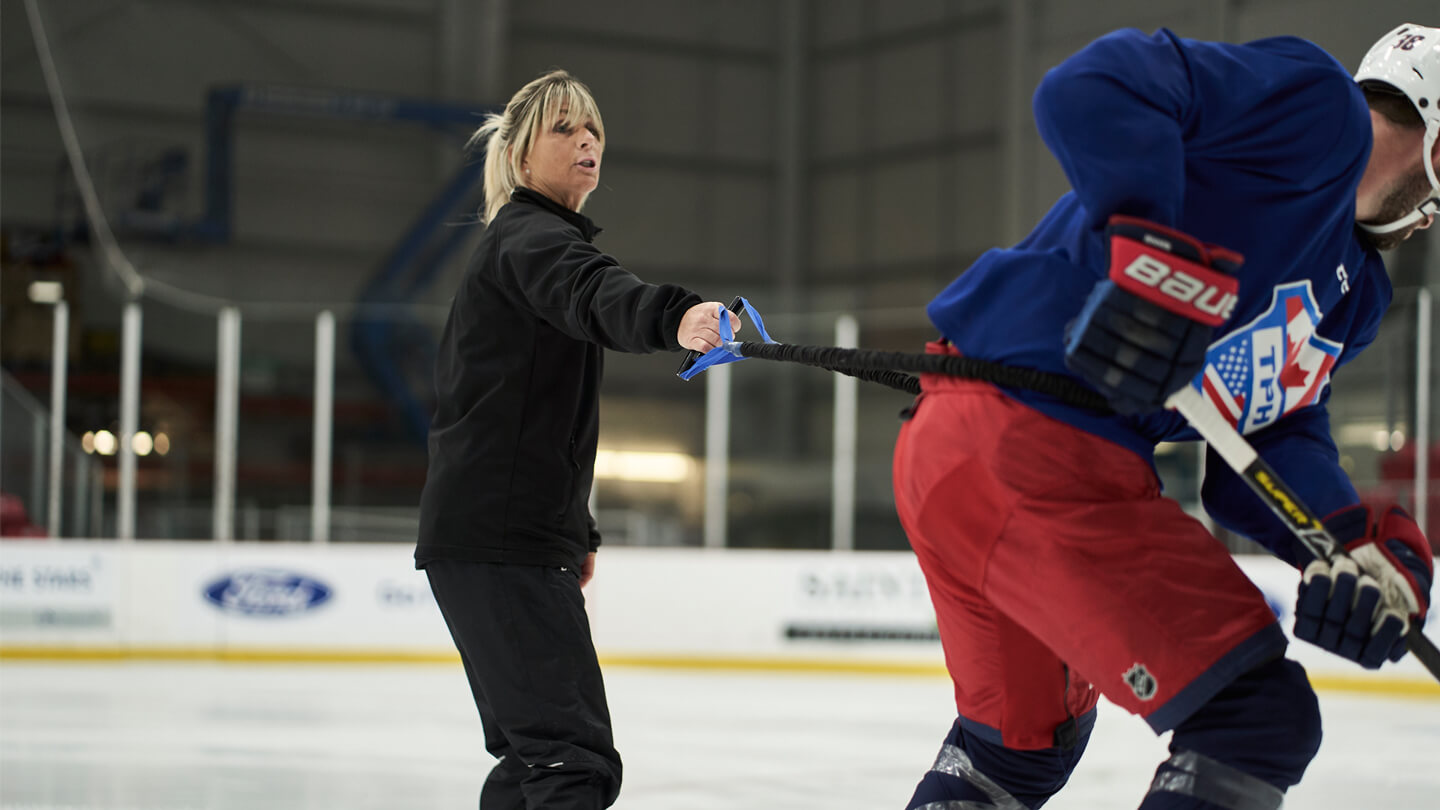It was a humbling experience. While he waded into the Canadiens dressing room — “the holiest of holies,” as he calls it — with a deep appreciation for his craft, he quickly learned that alone wasn’t enough to cut it at the sport’s highest level. A tireless work ethic had to fill in the gaps. “It forced me to elevate my game,” he says of that first year with the club. “Just like someone who’s playing junior who moves up to the NHL, if you don’t elevate your skill level, you’re not going to make it. And it was the same thing for me. I thought I was good at what I did, and I realized I wasn’t. That my game wasn’t there.”
Three months into his tenure with the club, he wanted out. The demands seemed too great, too absurd — it was the Carbonneau Palms Incident but every day, with local all-stars like Patrick Roy similarly scrutinizing every aspect of their gear. “But I don’t quit,” Argentino says. “I put my nose to the grindstone and kept going, and what I learned, [how] I’ve grown from that, is that it doesn’t matter what anybody throws at me. I can do it.”
And they threw plenty, says Jimmy Licorish, who worked alongside Argentino at the shop back in those days, forging a working partnership alongside Marco that’s since lasted nearly three decades. Those Canadiens years were the most hectic of the bunch. The pair would be sharpening 100-plus skates a day from local walk-ins, he recalls, eating cold lunches at the machine between pairs, drinking paper-cup coffees long after they’d been drained of their heat. “He’d have this big white bag, and you always knew what the day was going to be like when he walked through the door,” Licorish says. “If he was walking like this” — he hunches over under the hulking imaginary load — “you knew you were going to have a big day.”
The biggest days came in early June, as the Canadiens embarked on the final series on their path to the ’93 Stanley Cup. That run served as a poignant reminder of the sway of NHL superstition, with stars on both sides of the aisle calling on Argentino for outlandish requests.
The first made its way to Argentino ahead of the most pivotal game of the series — Game 5, with L.A. on the ropes courtesy of a 3-1 Canadiens series lead. It was common practice for Argentino to work with both Montreal’s players and the visiting team. So, going about his routine in the Kings dressing room, Argentino was informed the captain wanted to see him after the reporters had cleared out. Argentino obliged, later returning to meet with Wayne Gretzky. “He pulls his glove off the shelf, and he had a small little stitch [in need of repair] — I don’t think it was an inch long,” Argentino says, “but he had a big hole in his palm. I said, ‘Do you want me to patch [the hole] for you?’ He says, ‘No, no, no, no. Don’t change anything. Don’t touch anything.’” Just the minor repair, he was told. “I said, ‘Okay, if that’s what you want… but you have a big hole in your glove.’” Nope. The Great One wasn’t interested in moving away from what had been working for him ahead of the do-or-die tilt. So Argentino did as he was told, repairing the stitch and returning the glove, gaping hole and all. “And that was the night that Montreal won the Stanley Cup.”












